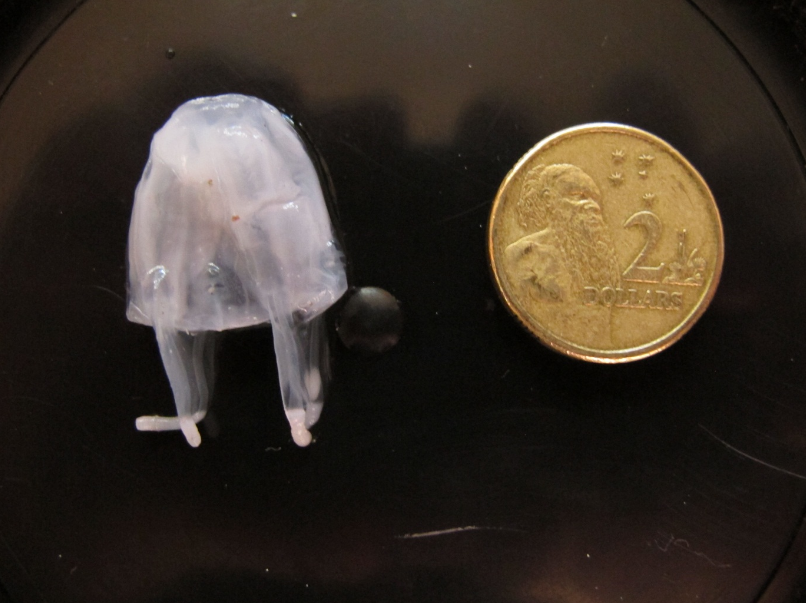
‘Vastly improved’ stinger season predicted: Sparkes
IRUKANDJI JELLYFISH
IRUKANDJI numbers are expected to be significantly lower this summer following one of the worst stinger seasons on record.
In a positive sign for Far North Queensland swimmers, a return to a traditional wet season should greatly reduce the occurrence of the potentially dangerous jellyfish in Port Douglas and surrounding beaches, according to Surf Life Saving Queensland regional manager Col Sparkes.
A total of 28 Irukandji stings were reported in 2015-16, up from just seven the year before, with Sparkes saying an unusually dry wet season was the likely cause.
“All indications are that this season will be vastly improved on last year which is really positive news,” Sparkes said.
“The planets aligned against us last year in terms of Irukandji, the conditions were perfect for them and it was one of worst on record, so we don’t expect it to be nearly as bad this year.
“Obviously weather plays such a critical factor and things can change, but at this stage it’s looking like an improved season for swimmers.”
Although it's believed only two people have died from Irukandji in Australia, a sting can be particular nasty and frightening. The tiny size of the animal - no bigger than a thumbnail - means keeping them out of stinger nets is difficult.
However, a number of last season’s incidents occurred because swimmers did not take the necessary precautions.

“It was disappointing the amount of people stung (last season) that were swimming either outside the stinger nets or at closed beaches,” he said.
“We need people to have some common sense about them during the stinger season, so swimming at patrolled beaches and within stinger net is paramount.
“Having said that, these (Irukandji) can get through the nets so a reduction in numbers is welcome news if things play out that way.”
Sparkes said all signs pointed to a November start to the stinger season in Port Douglas, with nets to be erected on Four Mile Beach in the first week of the month. Dragging is likely to begin in mid-to-late October before daily dragging once the nets are in place.
He said the deadly Box Jellyfish could return in greater numbers with more rain predicted, but the nets are designed to keep these lethal creatures out.
“There was not a lot of rain last season, which usually flushes the box jellyfish out of the river and estuary systems,” Sparkes said.
“At this stage the stinger nets will go in during the first week of November, and all indications are we are in for a more typical wet season,” he said.
“If there is more rain we might see a few more (Box Jellyfish) but the nets keep these guys out.”
Got something to say? Tell us what you think in the comments below!